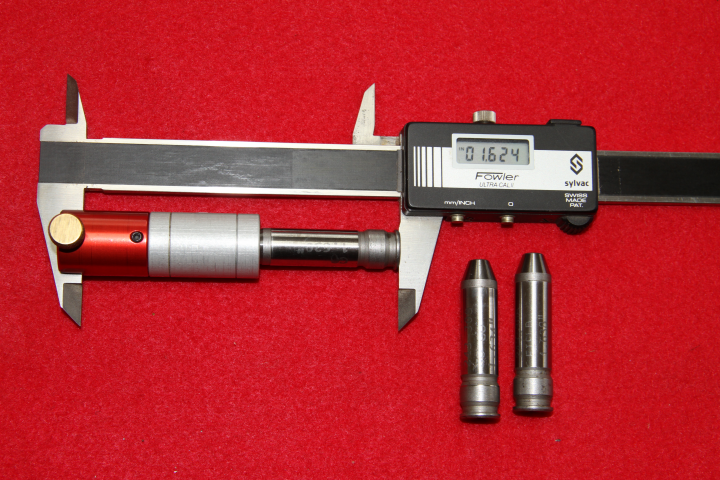So, I've been loading for 2 different .308's, one rem 700p and one savage mod 10-t sr. On this last load cycle, I am having a hard / tight bolt closure on the Savage. On the Rem things are smooth like normal. So, I did some measuring:
Tools: Hornady caliper, Hornady comparator to ogive, and Hornady comparator to shoulder datum. Wilson case gauge.
First, I dropped them in the case gauge thinking I might have not sized fully. all fit flush with the gauge.
Then I took a Fed GMM 168 HPBT from a factory box, cycled it through the savage, bolt closes like normal. measured the round from base to ogive = 2.222. Measured from base to shoulder datum = 1.654.
Then measured my loaded rounds base to shoulder 1.662 (average of 5 cases 1.663 to 1.661 max to min) then base to ogive = 2.196 (again average of 5, 2196max - 2.195min one oddball 2.199)
Conclusion, both completed rounds measure tip to tail 2.800, base to ogive my loads are shorter by .0255 (probably not the issue) from shoulder to base my loads are longer by .008 (could this be the issue?).
I've used this same die-lock ring- press bushing- lee press combo before with the Savage and had no trouble. Case trim is 2.005-2.006 well in spec. I’m a little confused.
Fired cases measure from shoulder to base = 1.665 in the savage. extraction is smooth. Using 2 headstamp's FC and Hornady. both range brass and both once fired, both measure same.
Tools: Hornady caliper, Hornady comparator to ogive, and Hornady comparator to shoulder datum. Wilson case gauge.
First, I dropped them in the case gauge thinking I might have not sized fully. all fit flush with the gauge.
Then I took a Fed GMM 168 HPBT from a factory box, cycled it through the savage, bolt closes like normal. measured the round from base to ogive = 2.222. Measured from base to shoulder datum = 1.654.
Then measured my loaded rounds base to shoulder 1.662 (average of 5 cases 1.663 to 1.661 max to min) then base to ogive = 2.196 (again average of 5, 2196max - 2.195min one oddball 2.199)
Conclusion, both completed rounds measure tip to tail 2.800, base to ogive my loads are shorter by .0255 (probably not the issue) from shoulder to base my loads are longer by .008 (could this be the issue?).
I've used this same die-lock ring- press bushing- lee press combo before with the Savage and had no trouble. Case trim is 2.005-2.006 well in spec. I’m a little confused.
Fired cases measure from shoulder to base = 1.665 in the savage. extraction is smooth. Using 2 headstamp's FC and Hornady. both range brass and both once fired, both measure same.
Last edited:





